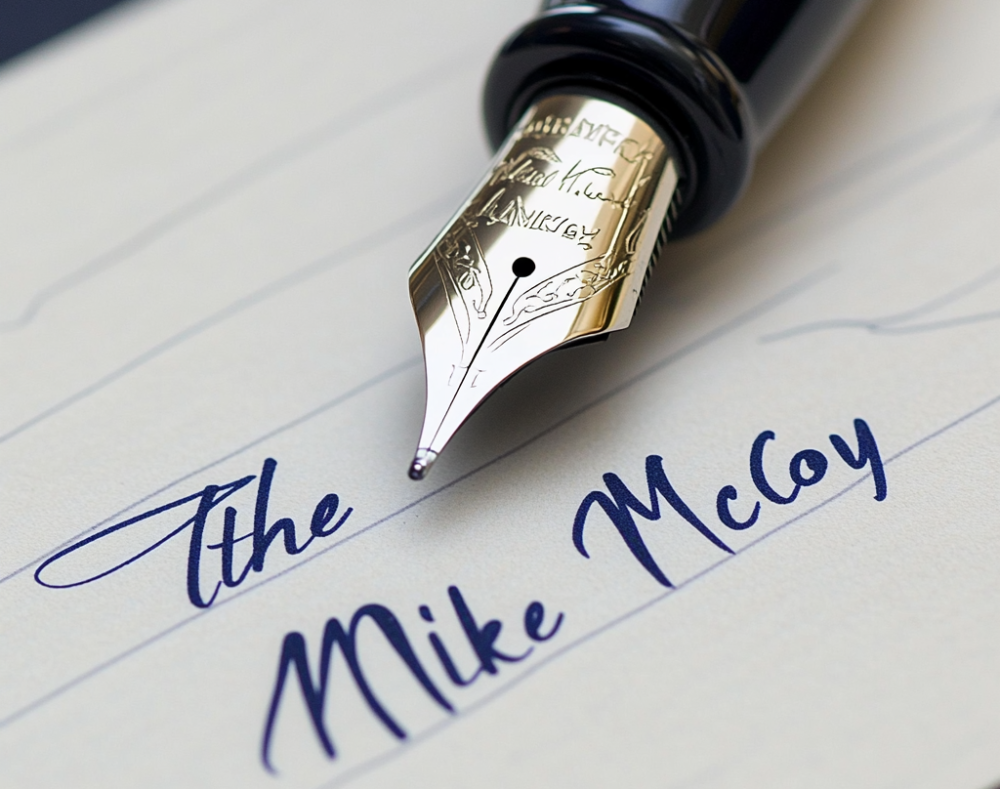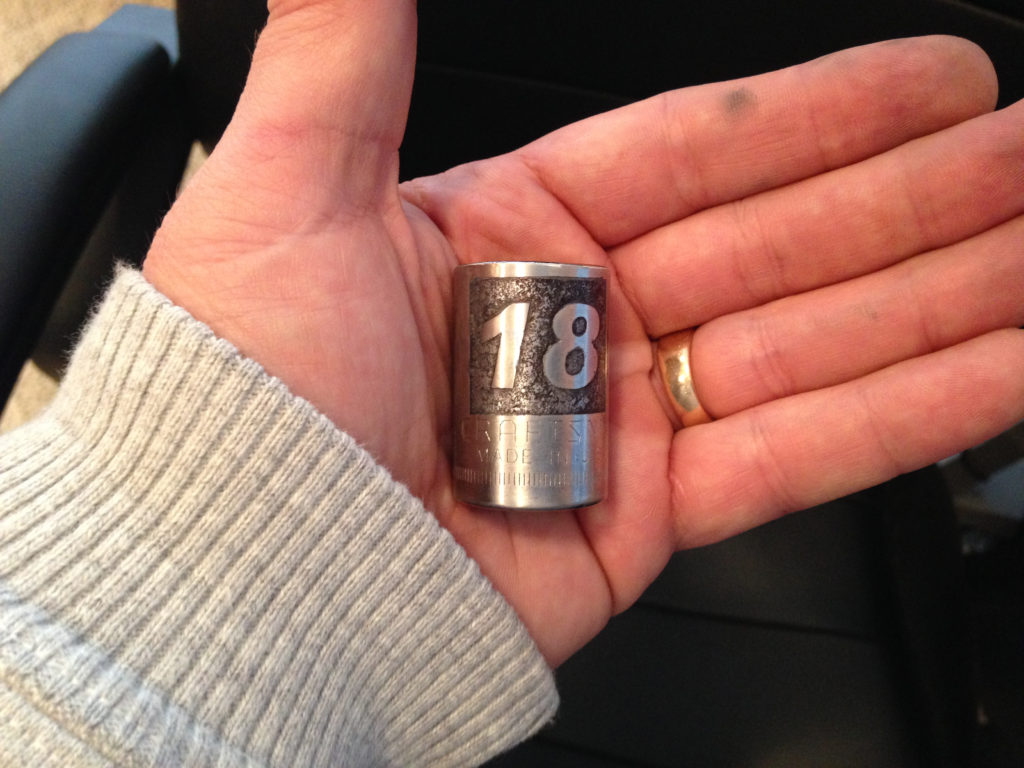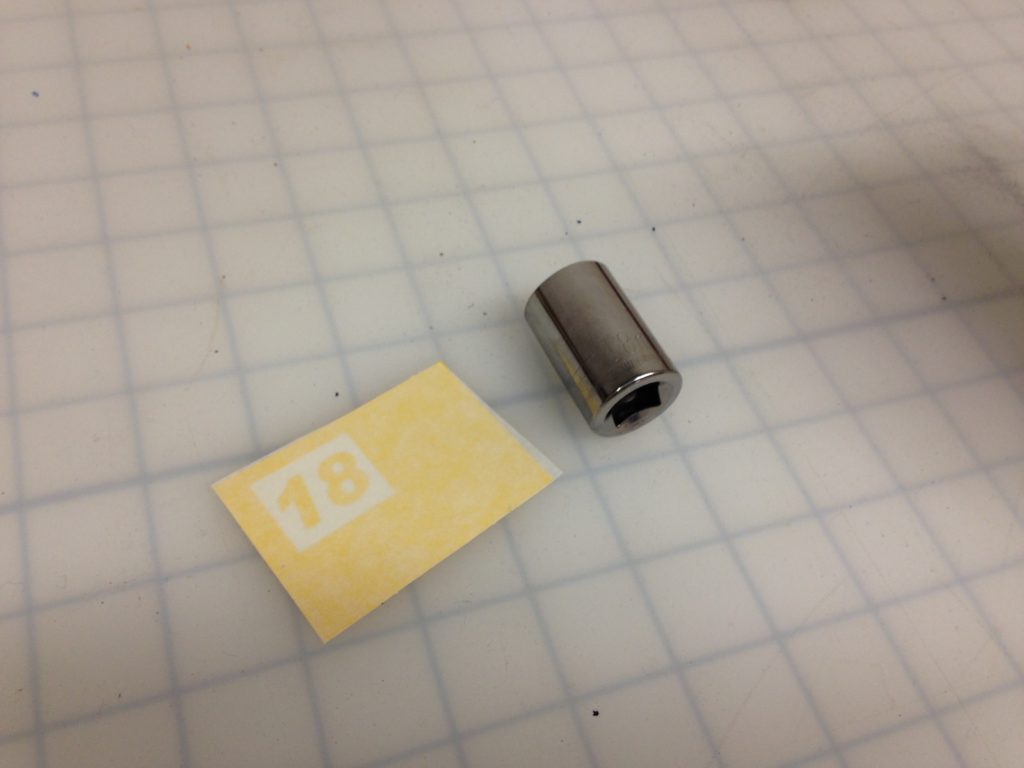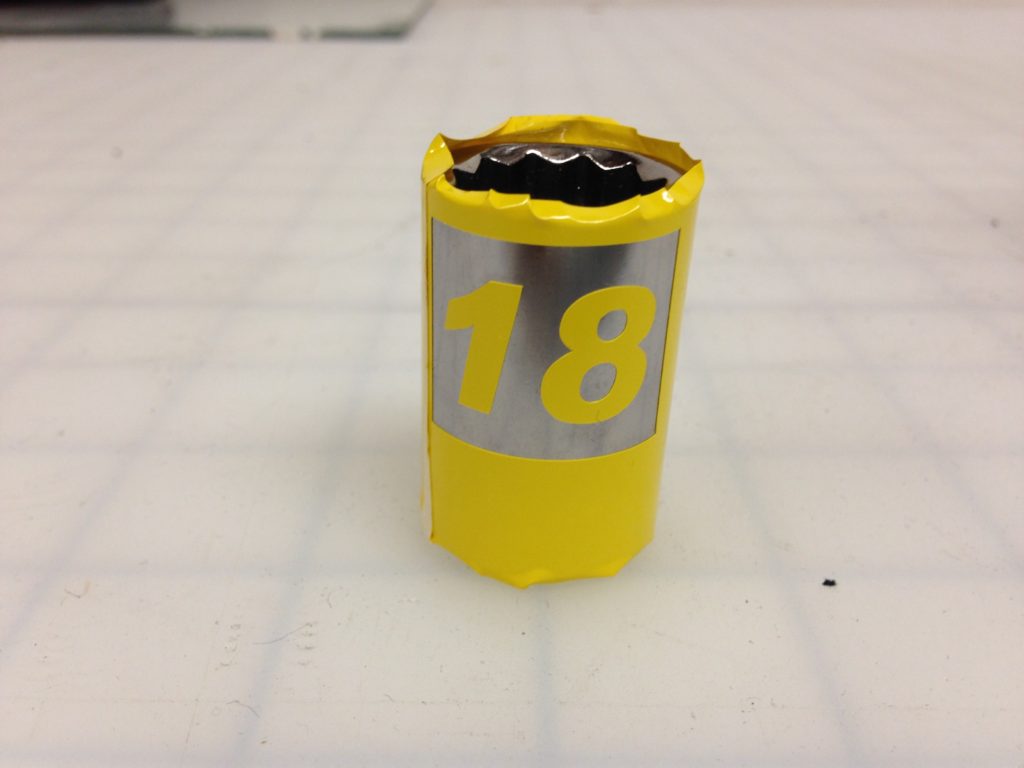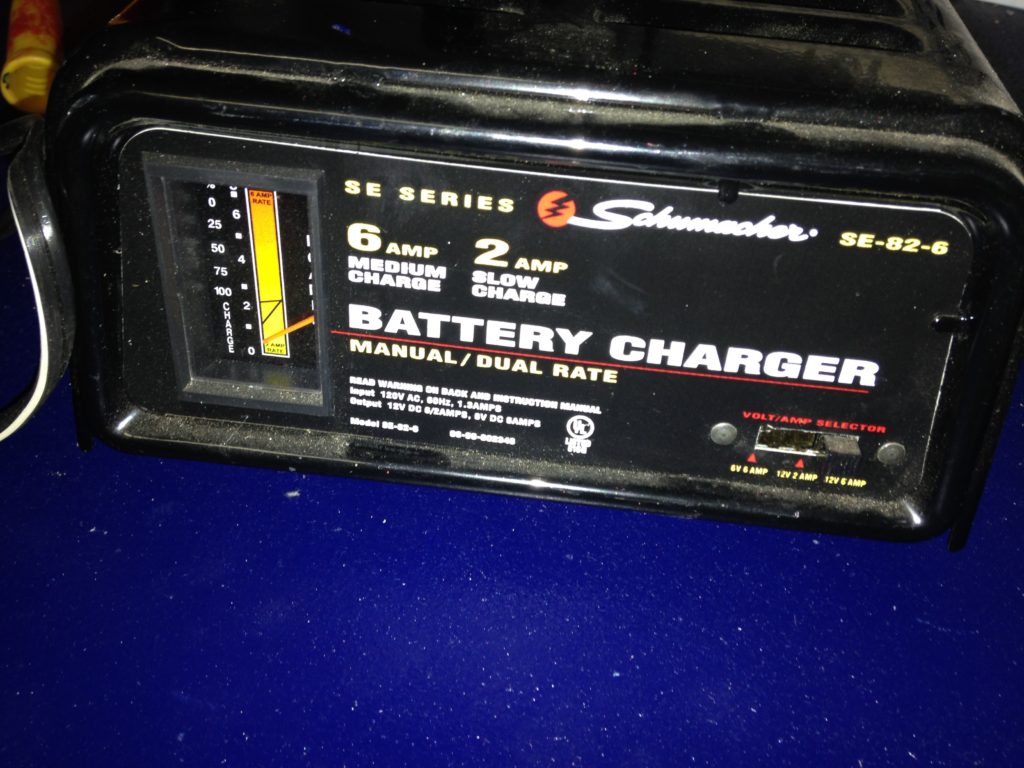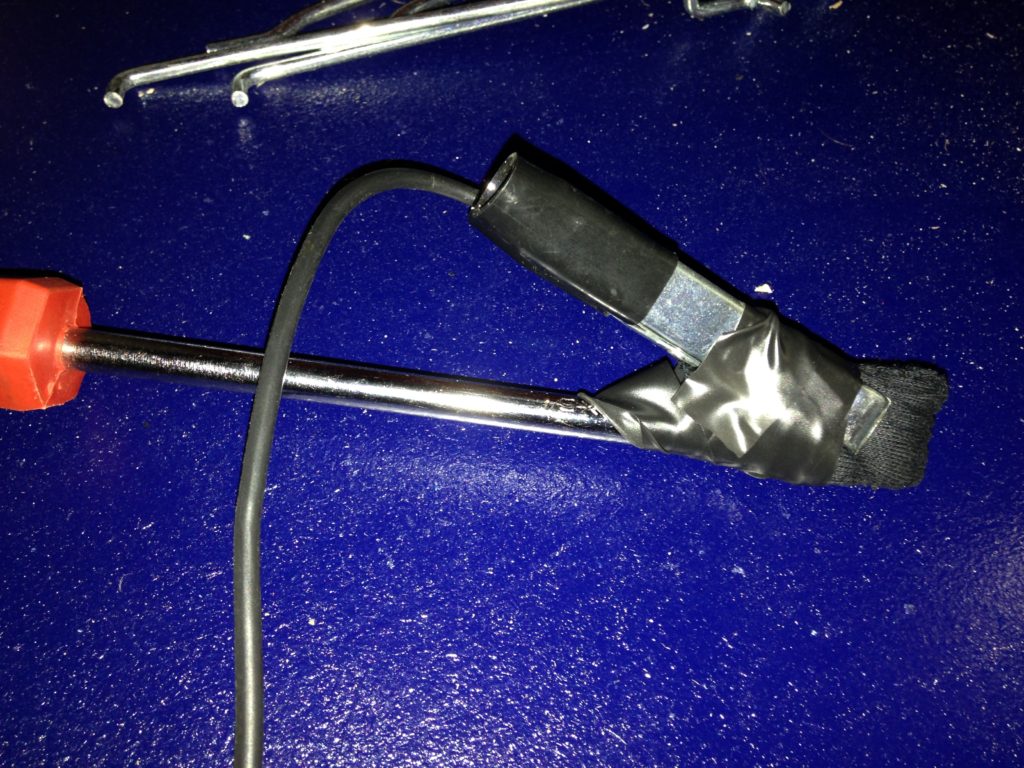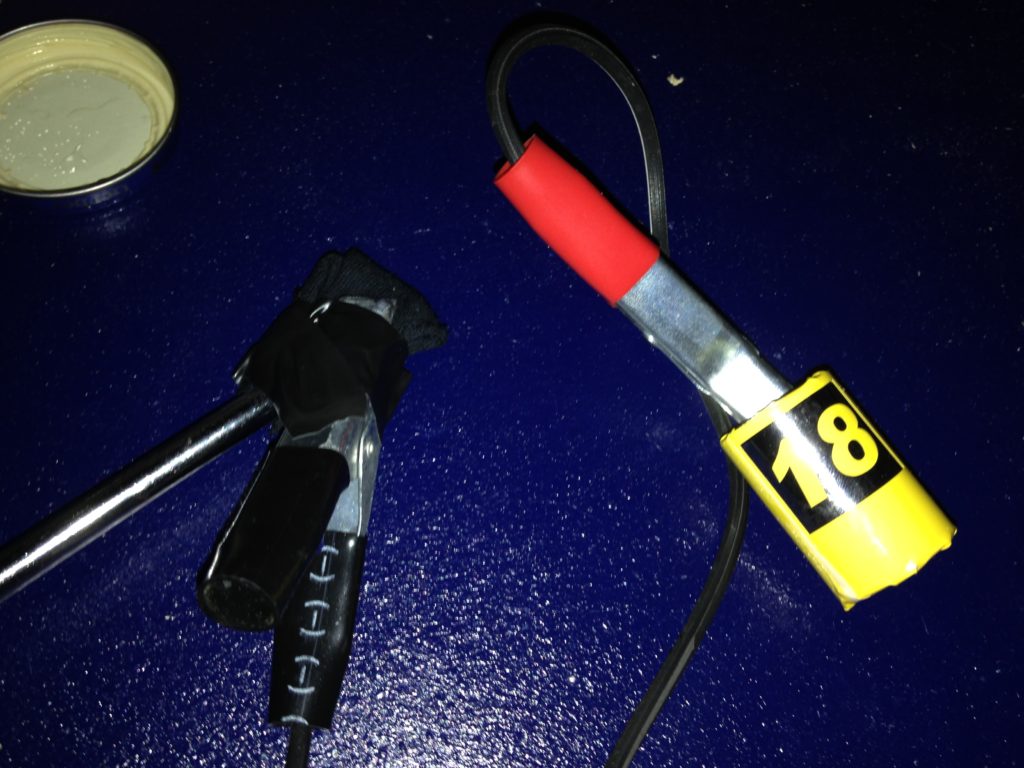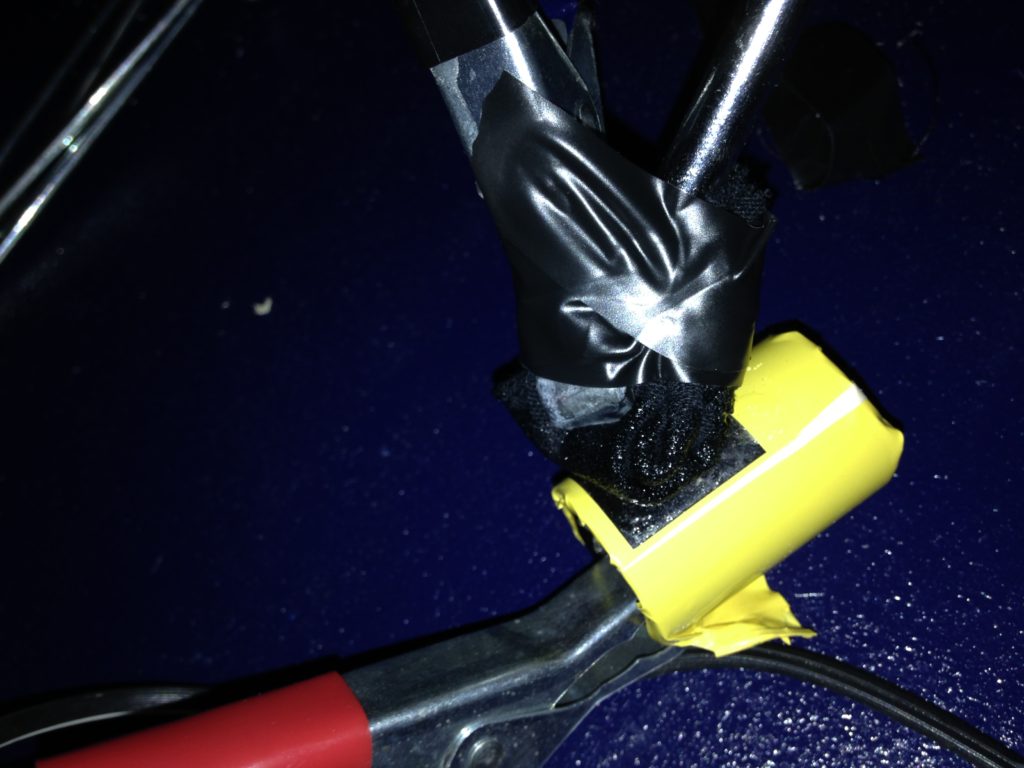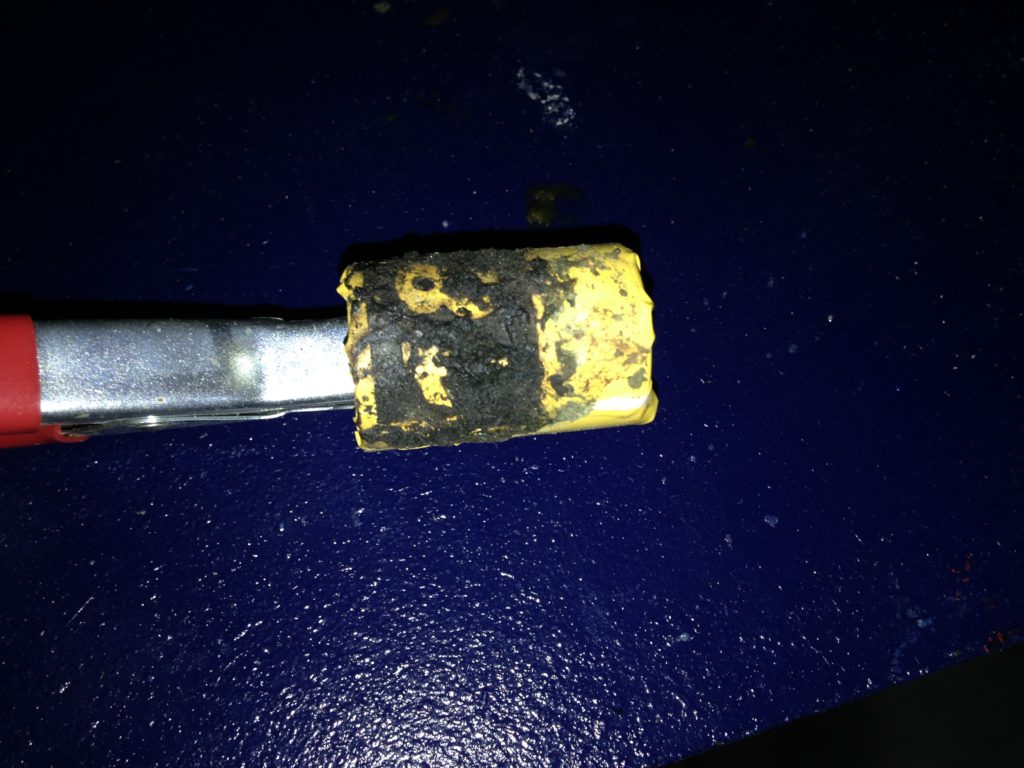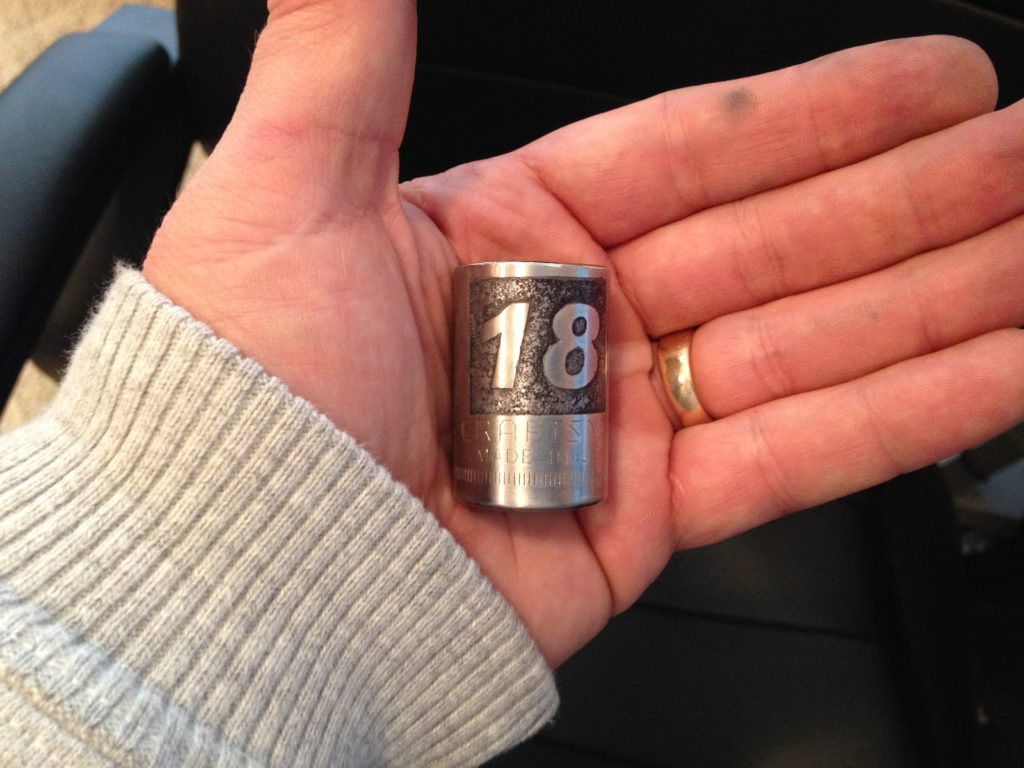As I’ve mentioned before, my eyesight isn’t quite what it used to be. Nothing rubs this in my face more than when I am searching through my toolbox for the correct size socket, only to have to pull out my reading glasses and find just the right lighting. With just a little research I found that I had all of the tools I needed to solve the problem right at my fingertips. I decided to try metal etching my sockets!!!! With simple table salt, water, an old t-shirt, some vinyl, and a battery charger I was on my way to etching some metal. I’ve outlined the process for you below along with some pics. Give it a shot – it’s better than going out forking a ton of cash over for the fancy laser engraved tools!
Metal Etching:
items you will need
- table salt
- water
- old cotton t shirt cut into small strips, or some cotton balls
- stencils
- battery charger
- old screw driver
How it’s done
- dissolve table salt in water. There is really no exact amount, but you will want a lot of salt in the mixture.
- place your stencil onto your socket or other piece of metal. Remember that any area of metal not covered up by the stencil will be etched if touched during the process
- fold the strip of t shirt to form a small dabber style end that you can put at the end of the old screwdriver
- use the alligator clip on the negative side of the battery charger to hold the t shirt strip in place onto the screwdriver. ( I like to secure it using some electrical tape)
- place the alligator clip from the positive side of the battery charger to your socket or metal object
- dip screw driver with the t shirt attached into the salt water solution
- touch the solution soaked t shirt to the bare metal on the socket and hold for about 20 seconds
- you will hear a sizzling sound and begin to see vapors. Don’t breathe this stuff in!!!
- continue to dab the bare metal areas. The more you do this process the deeper the etching will be.
- Regularly re-wet your dabber, but you don’t want it dripping wet.
- During the process you will see some black gunk forming. This means the process is working.
- remove the stencil and any tape you may have used to mask the area
- wash the socket
- you can use a sharpie to darken the etched area if desired.
